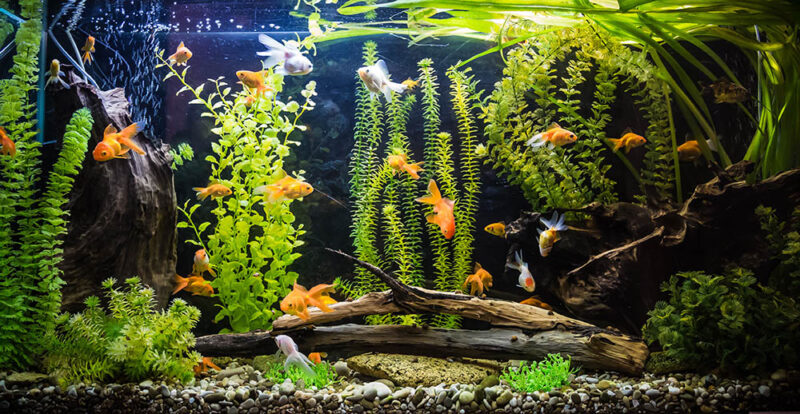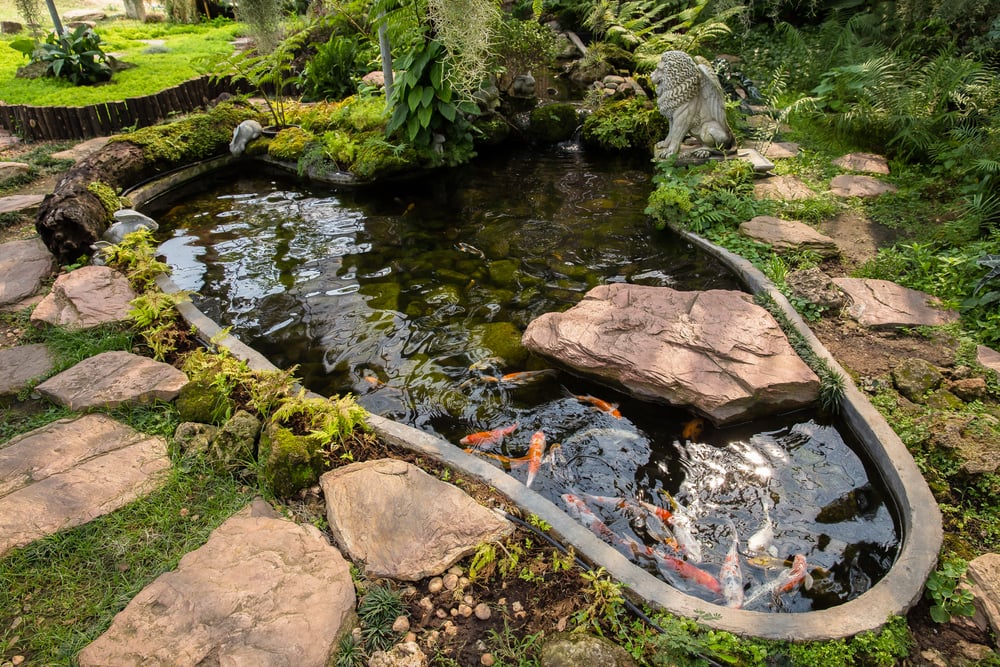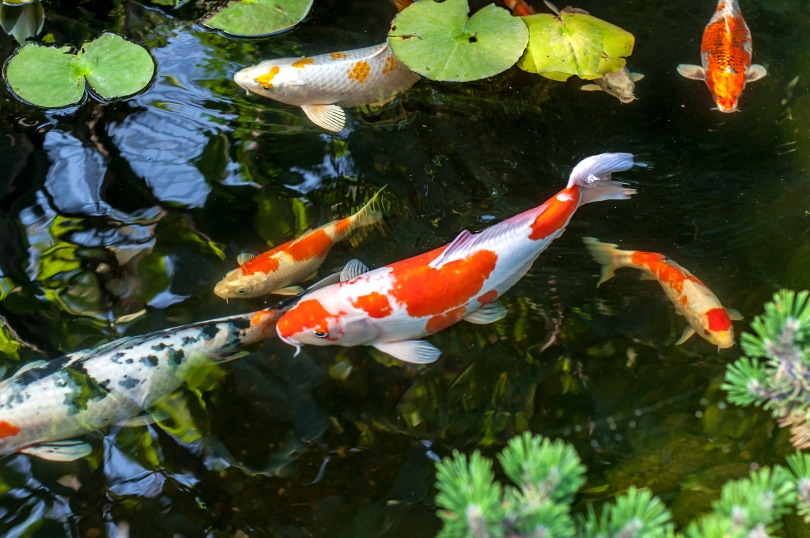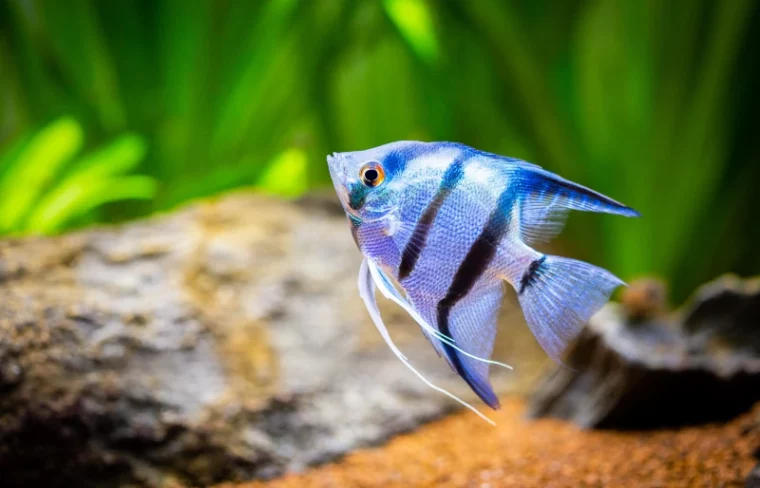
Click to Skip Ahead
Angelfish are lovely fish that bring a distinctly tropical look to your freshwater tank. They should not be confused with saltwater angelfish, though. Freshwater angelfish are a variety of South American cichlid, and while they are more docile and better suited for community tanks than many African cichlid species, the angelfish has particular care needs and behaviors that should be considered.
Angelfish Breed Overview
| Size: | Up to 6 inches long |
| Lifespan: | 8–12 years |
| Similar Breeds: | Other South American cichlids, rainbowfish, tetras |
| Suitable for: | Tropical freshwater tanks |
| Temperament: | Generally peaceful, aggressive toward other Angelfish, active |
Although there are freshwater and saltwater angelfish, they are not related to each other. They also have distinctly different appearances, with freshwater angelfish having the triangular fins that are frequently associated with angelfish. These beautiful fish are active and colorful, making them quite popular among aquarists, but they also get quite large and need lots of space to thrive. They are easier to care for than African cichlid species and hardy fish, so they are often considered suitable fish for beginners.
Angelfish Characteristics
Angelfish Cost
Angelfish are native to the slow-moving waters of South American river basins, but they are relatively easy fish to breed in captivity. Because of this, it’s not uncommon to find captive-bred specimens in the aquarium pet trade.
They are relatively affordable fish, typically retailing for between $5 and $20 for a single fish, although specialty colors and varieties can sell for upwards of $50. Their popularity makes them easy to acquire through pet stores and aquarium specialty shops, as well as breeders and online retailers. Keep in mind, though, that they prefer to be kept in small groups, so you will be investing in multiple fish at once.
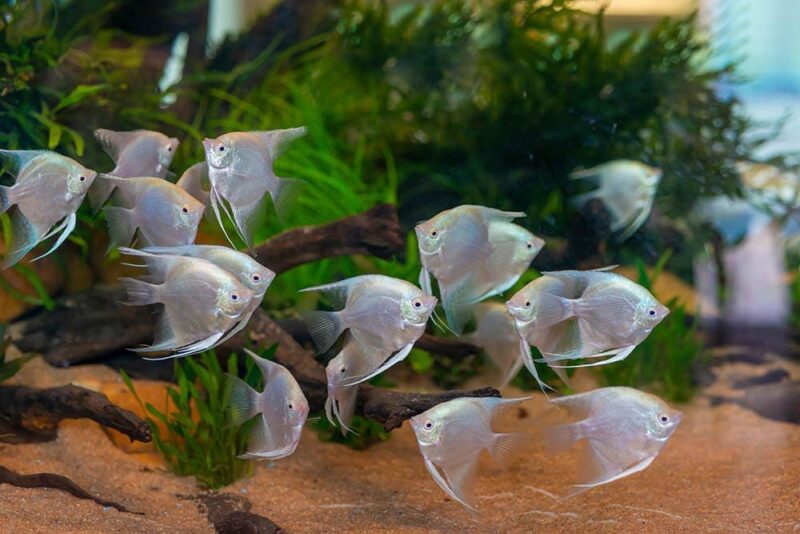
Sociability of the Angelfish
Do These Fish Make Good Pets?
Yes, angelfish are good pets. They are unique and eye-catching fish that come in a variety of colors and patterns. They are active, social fish that spend most of their time swimming around the middle of the water column, so you can count on your angelfish to always be front and center in your tank.
Does This Fish Make a Good Tankmate?
Angelfish can be a great addition to tropical community tanks, as long as enough space is provided. They are generally peaceful fish, but it’s not uncommon for them to show aggression or territorial behaviors toward other angelfish, especially during breeding periods. Keeping your angelfish in shoals of approximately five fish will help reduce stress, thus reducing the risk of aggression toward tankmates. Be aware that angelfish are omnivores that will eat smaller tankmates if the opportunity arises.

Care Guide & Tank Set Up
Water Quality, pH & Temperature
Unlike African cichlids, angelfish prefer slightly acidic to neutral water, with a pH ranging from 6.5–7.5 being preferred. They are hardy fish that can tolerate a wider pH range, though. General hardness should be kept between 5–12 dH, while temperature is ideally kept between 75–84°F, although they can tolerate warmer temperatures as well. Although they’re hardy, poor water quality can significantly reduce the health of your fish, increasing stress and the risk of illness.
Substrate
Angelfish enjoy foraging along the bottom of their environment for leftover food and small crustaceans. To allow them to comfortably do this, they should be provided with a smooth, small substrate, like sand or very fine gravel. Substrate should also be appropriate for maintaining plant life in your tank.
Plants
There are lots of plants that are suitable for an angelfish tank, like Java fern, Java moss, Vallisneria, and water sprite. Amazon sword is a preferred plant since it is native to the same area as angelfish themselves. Angelfish may uproot plants, though, so plant weights, floating plants, and plants that can be attached to surfaces may be the best options.
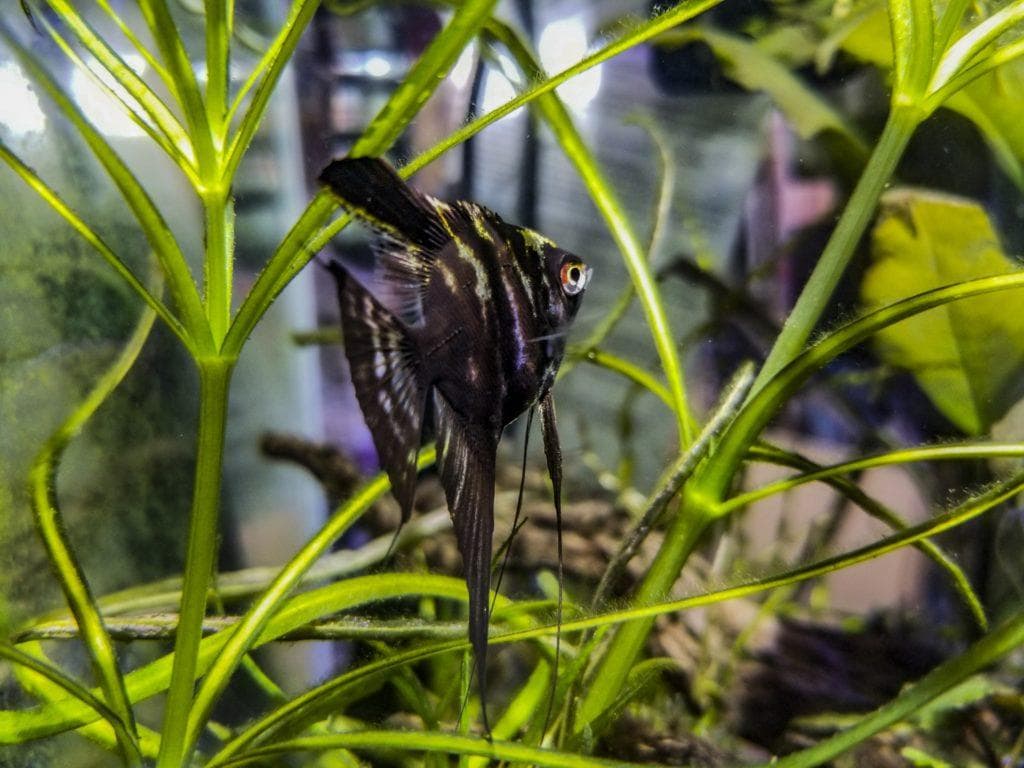
Lighting
Lighting provided in your angelfish tank should be enough to maintain the health and growth of the live plants in the tank. Angelfish need a regular day/night lighting cycle, but they may not prefer bright lighting. Avoid too much light since this can lead to algae overgrowth.
Filtration
Due to their size, angelfish can produce a heavy bioload in their tank. They should be provided with a filtration system that is rated for a tank larger than the one they live in. Canister filters are ideal, but powerful hang-on-back and internal filters are also acceptable options for these fish.
Things to Know When Owning an Angelfish:
Food & Diet Requirements
Angelfish are true omnivores, although they seem to prefer a protein-heavy diet. Freshwater angelfish food and tropical community food will meet the needs of your fish but aim to select a high-quality food that contains limited fillers and a good source of whole protein. You can treat your angelfish to additional foods as treats, like bloodworms, brine shrimp, mosquito larvae, and leafy green vegetables.
Size & Growth Rate
While angelfish may only reach up to 6 inches in length, they can reach up to 8 inches in height, thanks to their tall, pointed fins. In the wild, some angelfish have been known to reach up to 10 inches in length. Rapid growth can be expected in the first 6 months of life, with many angelfish reaching 4 inches in length by this point. Growth will slow after 6 months, though, and it may be around a year before your angelfish reaches its full adult size.
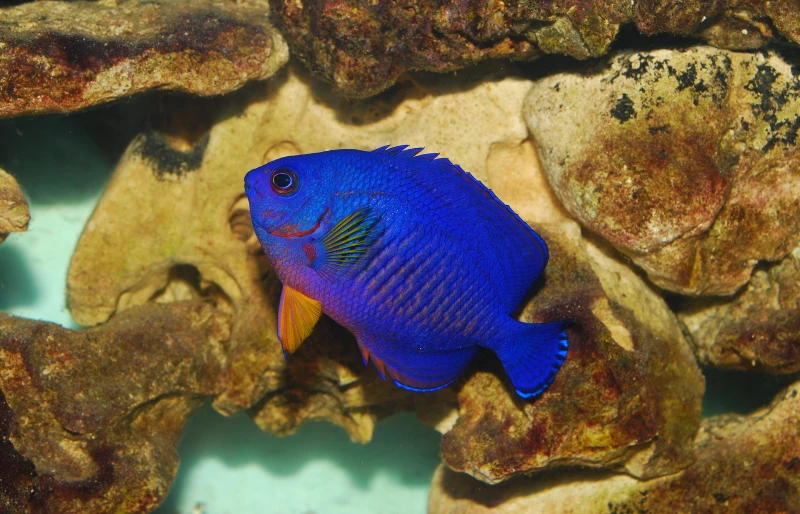
Varieties
There are three different species that make up the freshwater angelfish group, but there are multiple varieties of fish within each species. Of the three species, Pterophyllum scalare has the most domesticated varieties.
Lifespan and Health Conditions
Male vs Female
Unlike many other fish species, male angelfish are often larger than the females. They also tend to have a faster growth rate, often reaching their full adult size more quickly. Males have rounded bodies that are almost circular in shape when viewed from the side, while females have angular bodies. Males have forked pectoral fins and a thick bump on the forehead, while females lack both of these qualities. There are also differences in the anal opening, with females having a shallow, blunt tube and males having a more narrow, thin tube.
3 Little-Known Facts About Angelfish
1. Angelfish Can Be Highly Aggressive
2. Domestic Angelfish Can Be Found in Almost Every Color of the Rainbow
3. While They Are Carnivores in the Wild, They Require Mixed Diets While in Captivity

Final Thoughts
Freshwater angelfish are an excellent addition to tropical community tanks, especially when kept with other South American fish, like tetras. They are unique fish that can be the centerpiece of your tank, and thanks to their hardy nature, they can be kept by beginners. They may become aggressive and territorial, especially when not provided with enough space, though, so make sure to keep your angelfish in a large enough tank. A single angelfish needs at least 20 gallons of space, while a pair needs 40 gallons and a group needs 55 gallons, at minimum.
Featured Image Credit: Joan Carles Juarez, Shutterstock


